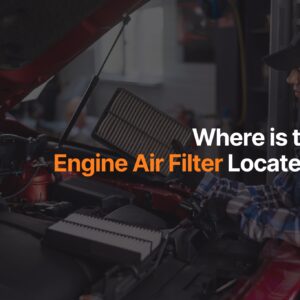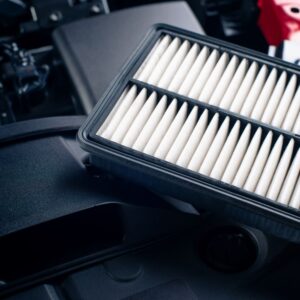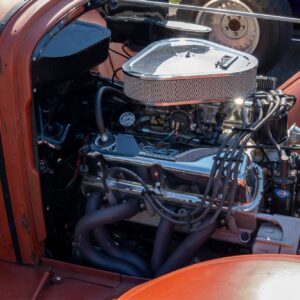When it comes to OG sports cars, you’ll always hear the Porsche 911 thrown into the mix. Known as one of the most successful competition cars, the Porsche 911 exudes class, power, and style.
Today’s Porsche 911 variants are a lot different compared to the first generation. One of the most notable differences would be the switch from air-cooled to liquid-cooled engines.
A Closer Look at the Porsche 911’s Air-Cooled Engine
The very first 911 had a 2.0L rear-mounted engine with a single overhead camshaft and horizontally opposed six-cylinder setup (boxer type), which produced 130 hp and 129 lb-ft. torque.
The 911’s first engine was air-cooled, which meant air flowed over the engine to keep it cool, unlike today’s liquid-cooled engines that use coolant.
Compared to liquid-cooled engines, air-cooled ones are pretty old-fashioned. Most air-cooled engines have fins extending from the engine to draw heat away from it. A fan then forces cool air over the fins, reducing the engine’s temperature. Some air-cooled engines also have ducts around the engine, redirecting air flow to the hottest areas.
Most (if not all) air-cooled engines have a boxer setup, which means the cylinders are horizontally opposed and spread farther apart compared to liquid-cooled ones. Through this setup, air can flow freely over the fins.

More About the Porsche 911
The Porsche 911 made its first public appearance in Stuttgart in 1964. It was marketed as a more powerful sports car than the 356.
The very first 911 was designed by F.A. Porsche, son of Ferry Porsche一the company’s founder. This was originally sold as the 901一its internal project number. Peugeot, Porsche’s French competitor, protested the name, claiming that it had rights in France to name its cars using three numbers with a zero in the middle.
Porsche then came up with the 911 model name while its part numbers were still branded as 901. In 1965, the first batch of 911s was exported to the US.
The Porsche 911 is certainly in a league of its own. Zuffenhausen is the only place where the model is built, the same location as the Porsche headquarters.
Owning a 911 puts you in good company, with famous A-listers like Eminem, Kendall Jenner, David Beckham, and Ralph Lauren owning the same model.
In 2017, Porsche hit a milestone by building the millionth 911 model. In 2023, this figure skyrocketed to 1.2 million.
Porsche 911 Engine Development
The Porsche 911 and its 901 engine were manufactured in the US from 1964 to 1973. Over the course of its production, the 901 underwent several modifications.
From 1964 to 1966, the 901 carried a five-speed transmission with a 2.0L flat six configuration.
The following year, the 911S was introduced alongside the original 911. The 911S was a five-speed manual that churned out 160 hp and 132 lb-ft. of torque and was slightly more powerful than the original. The 1967 engine was only produced for one year, donning the iconic Fuchs wheels, larger camshafts, and a variety of carburetors. After this year, the Fuchs wheels became a standard on 911s.
The 911L model was introduced in 1968 and was offered as a 901 five-speed manual optional: 905 four-speed Sportomatic.
1969 was the last year for the 2.0L engine. During this year, the 911 was offered in three variants, namely the T, E, and S models.
The 911T came as a 901 four-speed manual optional and five-speed manual. It generated 110 hp and 115 lb-ft. torque. Meanwhile, the 911E was offered as a 901 five-speed manual, generating 140 hp and 129 lb-ft. of torque. Lastly, the 911S was offered as a 901 five-speed manual, generating 170 hp and 134 lb-ft. torque.
The T, E, and S models saw some significant improvements between 1970 and 1971. During this time, they had a displacement of 2.2L. From this, displacement went up to 2.4L from 1972 to 1973 for the same models.
Common Issues with an Air-Cooled Engine
Having an air-cooled engine was fun while it lasted. Unfortunately, there’s no way it could’ve adapted to today’s strict emissions regulations.
One of the biggest disadvantages of an air-cooled engine is its inability to dissipate heat fast enough to maintain a certain temperature一a common problem when driving in hot weather, going uphill, or towing a trailer.
Noise can be another disadvantage of air-cooled engines, although some enthusiasts might disagree with this. There are, however, some air-cooled engines that run quietly.
In the case of the Porsche 911, the heat exchangers that push air around the oil in the engine to cool it down are always running even when the engine is cold. This meant that the technology behind air-cooled engines was inefficient, so it had to go.
Any information provided on this Website is for informational purposes only and is not intended to replace consultation with a professional mechanic. The accuracy and timeliness of the information may change from the time of publication.



















